Consider two concentric spherical metal shells of radii r1 and r2(r2>r1). If the outer shell has a charge q and the inner one is grounded, then the charge on the inner shell is
−r2r1q
zero
−r1r2q
−q
The correct Answer is:C
To solve the problem, we need to determine the charge on the inner spherical shell when the outer shell has a charge q and the inner shell is grounded.
1. Understanding the Setup:
- We have two concentric spherical shells:
- Inner shell with radius r1 (grounded).
- Outer shell with radius r2 (charged with q).
- Grounding the inner shell means its potential is set to zero.
2. Potential Due to the Outer Shell:
- The potential V at a distance r from a charged spherical shell is given by the formula:
V=kQr
where k is Coulomb's constant and Q is the charge on the shell.
- For the outer shell (with charge q), the potential at the radius r1 (where the inner shell is located) is:
Vouter=kqr1
3. Potential of the Inner Shell:
- Let Q′ be the charge on the inner shell. The potential due to the inner shell itself at its surface (radius r1) is:
Vinner=kQ′r1
4. Total Potential at the Inner Shell:
- The total potential Vtotal at the inner shell (which is grounded) must equal zero:
Vtotal=Vouter+Vinner=0
- Substituting the expressions we derived:
kqr1+kQ′r1=0
5. Solving for the Charge on the Inner Shell:
- Rearranging the equation gives:
kQ′r1=−kqr1
- We can cancel k and r1 (assuming r1≠0):
Q′=−q
6. Conclusion:
- The charge on the inner shell is:
Q′=−q
Final Answer:
The charge on the inner shell is −q.
- We have two concentric spherical shells:
- Inner shell with radius r1 (grounded).
- Outer shell with radius r2 (charged with q).
- Grounding the inner shell means its potential is set to zero.
- The potential V at a distance r from a charged spherical shell is given by the formula:
V=kQr
where k is Coulomb's constant and Q is the charge on the shell.
- For the outer shell (with charge q), the potential at the radius r1 (where the inner shell is located) is:
Vouter=kqr1
- Let Q′ be the charge on the inner shell. The potential due to the inner shell itself at its surface (radius r1) is:
Vinner=kQ′r1
- The total potential Vtotal at the inner shell (which is grounded) must equal zero:
Vtotal=Vouter+Vinner=0
- Substituting the expressions we derived:
kqr1+kQ′r1=0
- Rearranging the equation gives:
kQ′r1=−kqr1
- We can cancel k and r1 (assuming r1≠0):
Q′=−q
- The charge on the inner shell is:
Q′=−q
The charge on the inner shell is −q.
Topper's Solved these Questions
- BOOK - DC PANDEYCHAPTER - ELECTROSTATIC POTENTIAL AND CAPACITORSEXERCISE - (B) Chapter exercises20videos
ELECTROSTATIC POTENTIAL AND CAPACITORS
- BOOK - DC PANDEYCHAPTER - ELECTROMAGNETIC WAVESEXERCISE - Sec C22videos
ELECTROMAGNETIC WAVES
- BOOK - DC PANDEYCHAPTER - ELECTROSTATICSEXERCISE - Medical entrances gallery37videos
ELECTROSTATICS
Similar Questions
Consider two concentric spherical metal shells of radii r1 and r2(r2>r1). Find the charge on the inner shell and charge distribution.
View SolutionThere are two concentric metal shells of radii r1 and r2(>r1). If initially, the outer shell has a charge q and the inner shell is having zero charge and then inner shell is grounded. Find :
(i) Charge on the inner surface of outer shell.
(ii) Final charges on each sphere.
(iii) Charge flown through wire in the ground.View Solution
Knowledge Check
- Question 1 - Select One
The capacitance of two concentric spherical shells of radii R1 and R2(R2>R1) is
A4πε0R2B4πε0(R2−R1)R1R2C4πε0R1R2(R2−R1)D4πε0R1 - Question 2 - Select One
The radii of two concentric spherical conducting shells are r1andr2(>r1). The change on the oute shell is q. The charge on the inner shell which is connected to the earth is
Aq(r2r1)Bq2(r1r2)C−q(r1/r2)Dq2(r2r1) - Question 3 - Select One
Charge on the outer sphere is q, and the inner sphere is grounded. Then the charge q' on the inner sphere is q', for
(r2>r1)
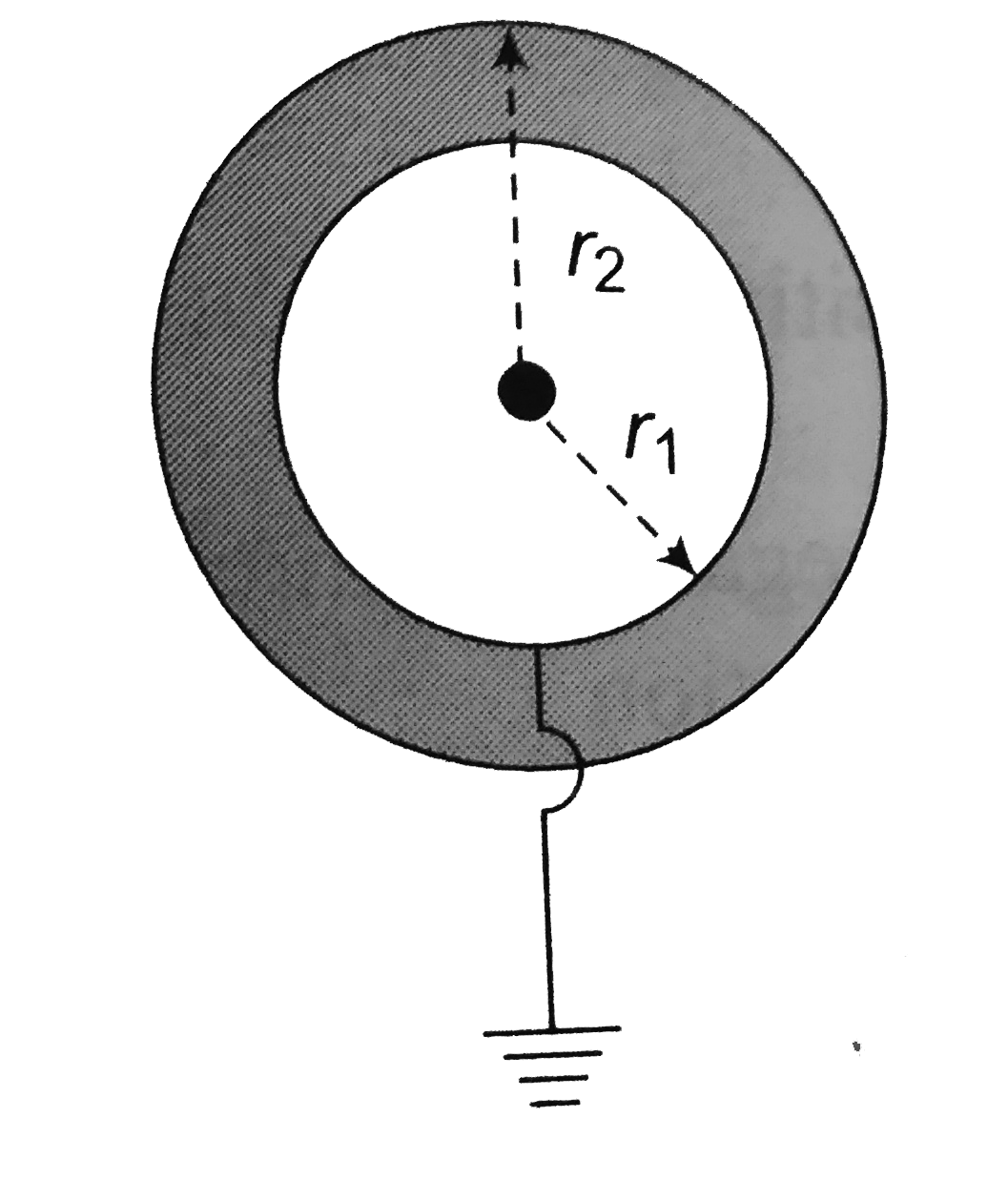 AzeroBq'=qCq'=−r1r2qDq'=r1r2q
AzeroBq'=qCq'=−r1r2qDq'=r1r2q
Consider two concentric spherical metal shells of radii 'a' and b>a .The outer shell has charge Q but the inner shell has no charge.Now the inner shell is grounded ,This means that the inner shell will come at zero potential and that electric fields lines leave the outer shell and end on the inner shell.(a) Find the charge on the inner shell
Find the potential on outer sphere.
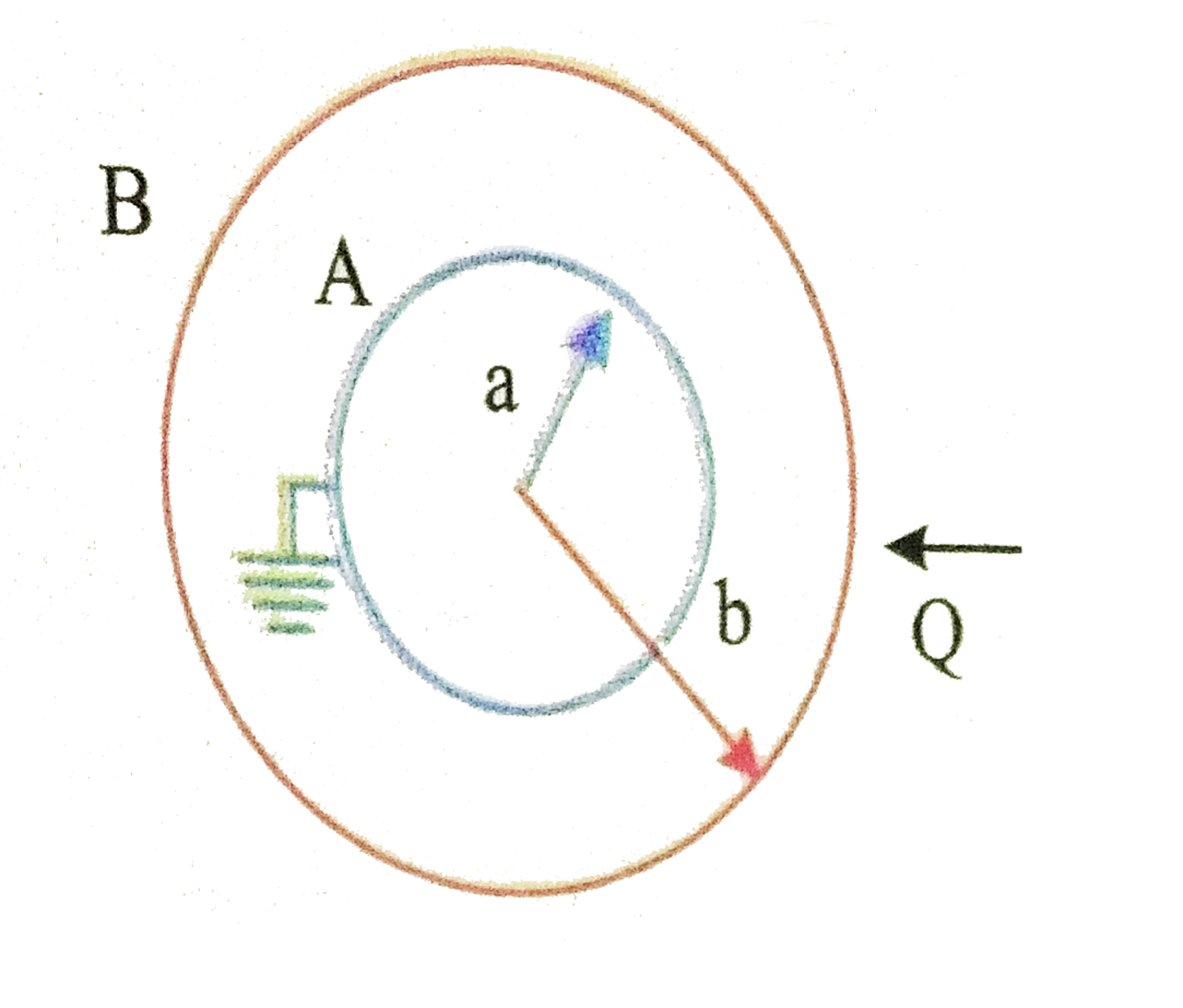 View Solution
View SolutionThere are two concentric conducting spherical shells of radii 10 cm and 20 cm. The outer shell is charged to a potential of 50esu while inner shell is earthed. The charge on outer shell is
View SolutionThere are two concentric conducting spherical shells of radius rA and rB respectively (rB=2rA). If the inner shell is given a charge Q and outer shell is given a charge 2Q, then the potential difference between the surfaces of the shells will be K=14πε0
View SolutionFind the equivalent cappacitance between A and B.
(a) Three conducting concentic shells of radii r,2r and
(b) An isoltated ball-shaped conductor of radius r surrounded by an adjuacent layer of dielectric (K) and outer radius 2r.
Two conducting concentic spherical shells having radii r1 and r2(r2>r1), calculate capacity of the system if
(i) The inner shell is given a charge and outer is connected to the earth.
(ii) The outer shell is given a charge and inner is connected to the earth.
(d) Find capacitance of the system
(i) Two shells of radii r1 and r2 having charges are connected by a metallic wire, the separation between shells is large.
(ii) Two shells of radii r1 and r2 carry equal and opposite charges and are separated by a distance d.
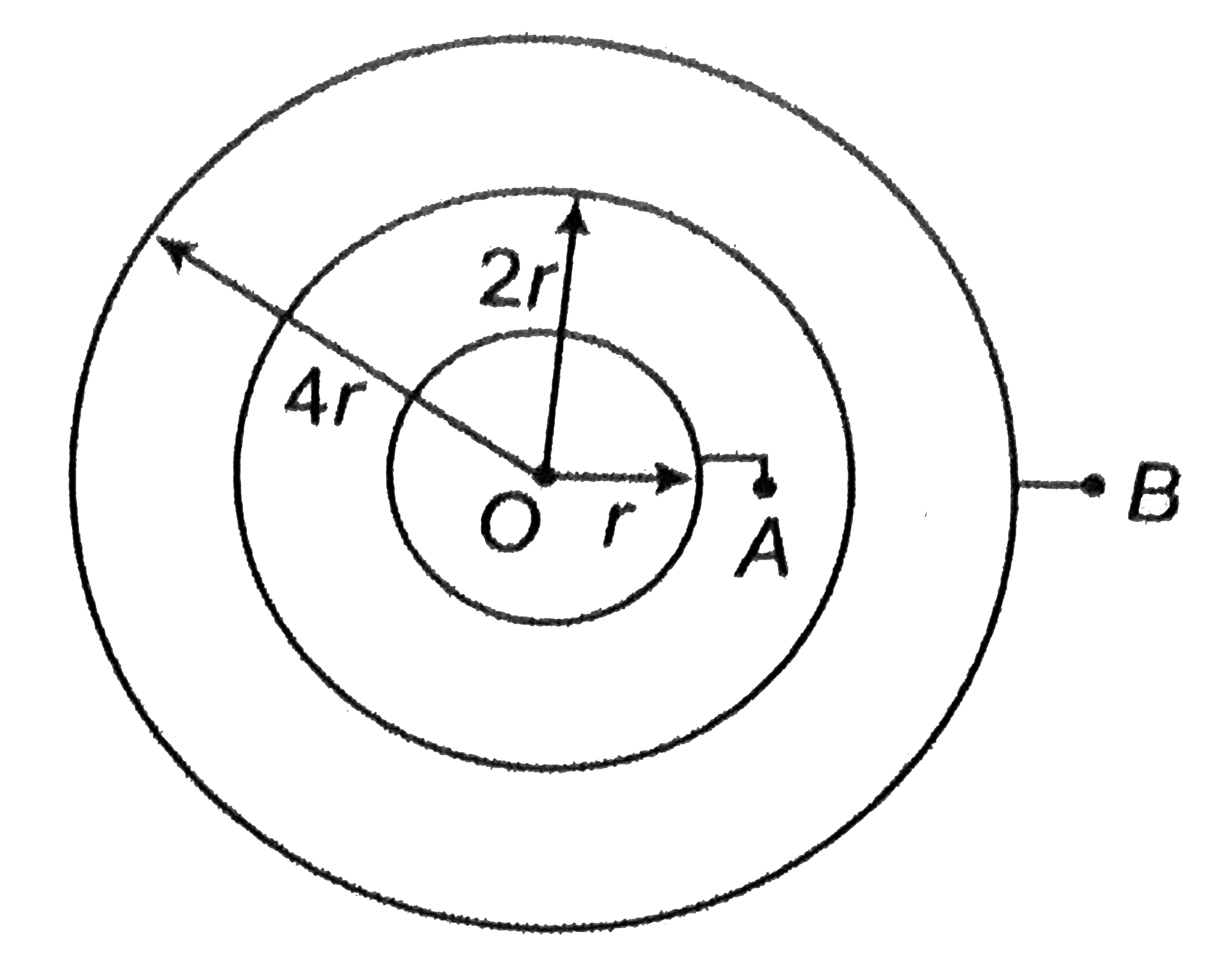
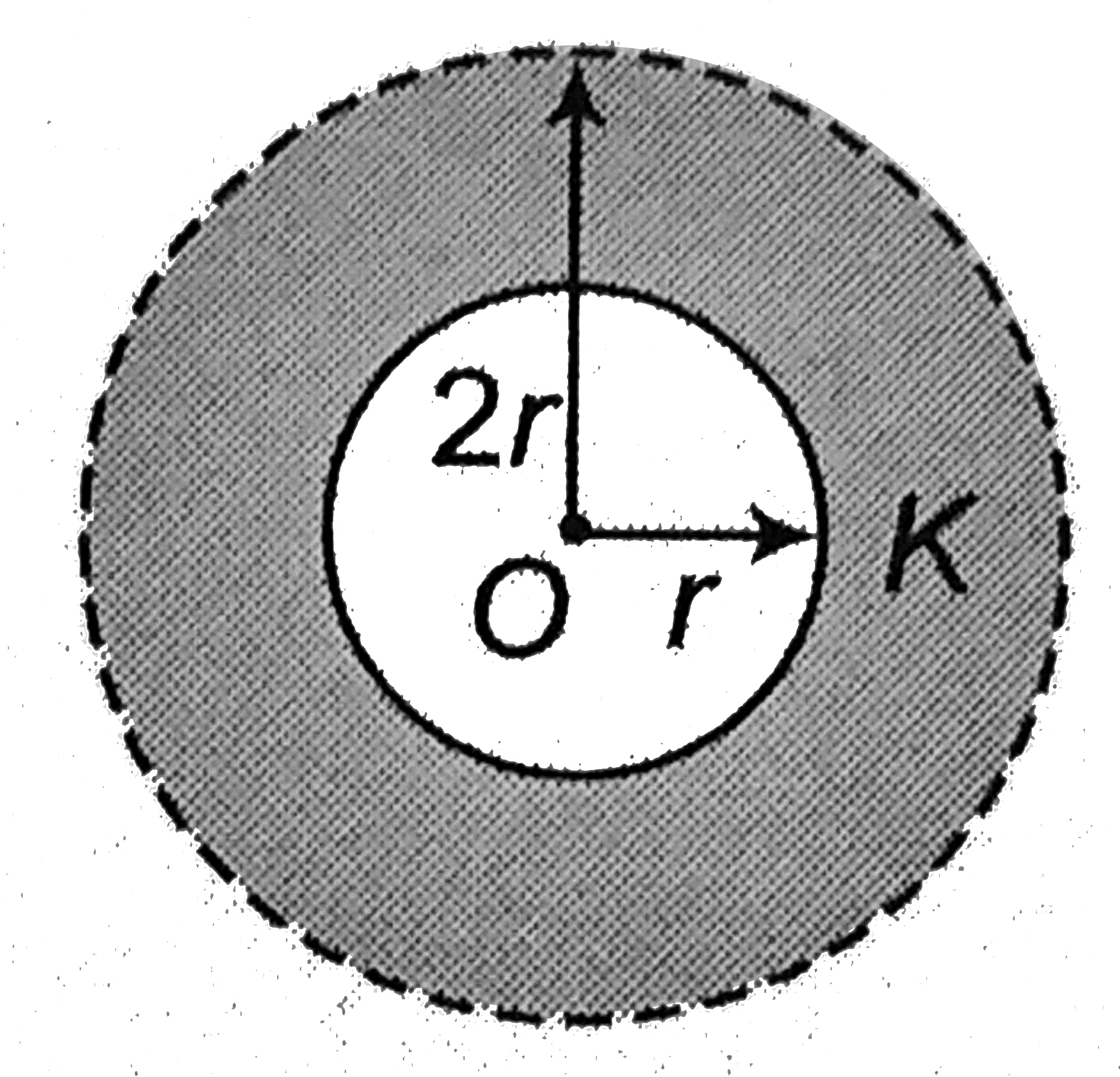
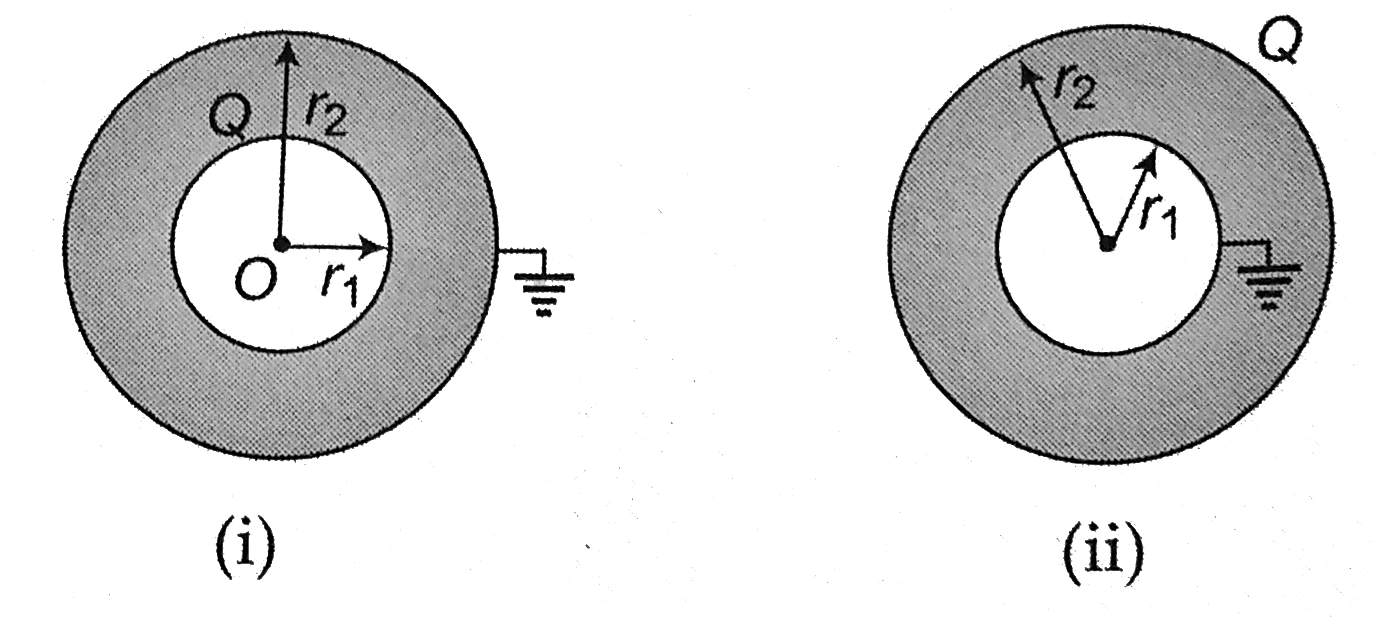 View Solution
View Solution(Figure 3.158) shows two conducting thin concentric shells of radii r and 3r. The outer shell carries charge q and the inner shell is neutral . The amount of charge that flows from the inner shell to the earth after the key K is closed is equal to (1/n)th of the charge on the outer shell. What is the value of n ?
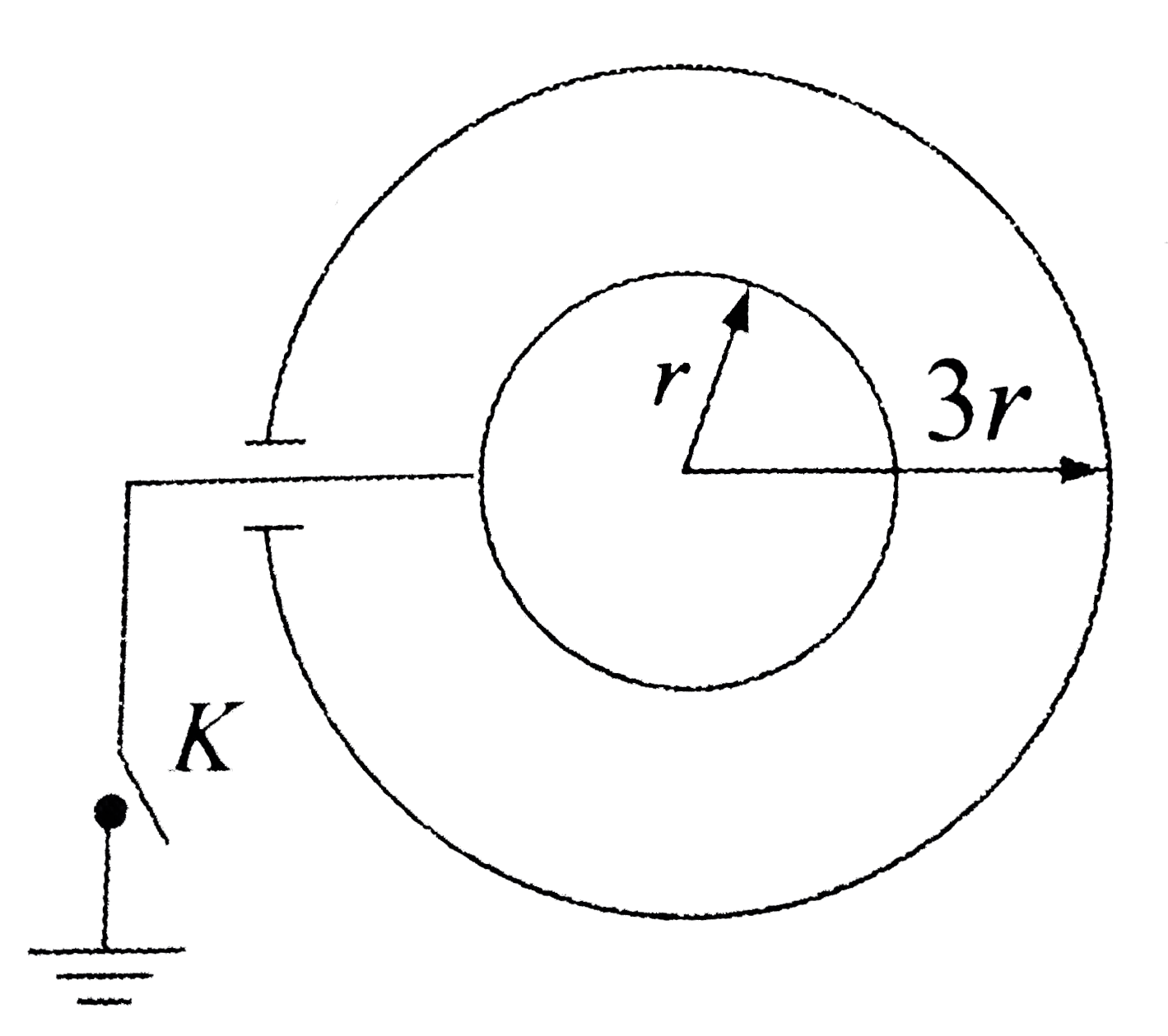 .View Solution
.View Solution

